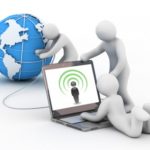 When it comes to ensuring that all 311 million Americans have access to broadband, we still have a long way to go. Although the FCC reported in its Seventh Broadband Progress Report and Order on Reconsideration that nearly 208 million people have adopted broadband, more than 100 million Americans, particularly 37 million women, lack a first-class digital citizenship.
When it comes to ensuring that all 311 million Americans have access to broadband, we still have a long way to go. Although the FCC reported in its Seventh Broadband Progress Report and Order on Reconsideration that nearly 208 million people have adopted broadband, more than 100 million Americans, particularly 37 million women, lack a first-class digital citizenship.
What obstacles are preventing more than 100 million people from adopting broadband in the U.S.?
According to an FCC broadband adoption and usage survey, the three most common impediments preventing more than 100 million people from becoming broadband adopters are cost, lack of digital literacy, and non-adopters’ perceived notion that broadband is not relevant in their lives.
In the same survey, another major barrier cited was the lack of availability of broadband in their communities, as well as the lack of knowledge that broadband is available in their area.
Although some industry professionals believe that broadband has been ubiquitously deployed, Chairman Julius Genachowski stated in the FCC’s latest progress report that “more than 20 million Americans live in areas where they still can’t get basic broadband. And most of these areas face no prospect of being served in the near future.â€
Some areas in North Carolina are an example of places where Americans cannot get basic broadband. As of November 2011, the NTIA reported that 65 percent of the state’s 3.7 million households have adopted broadband. However, nearly 4 percent of North Carolina households connect to the Internet using dial-up.
At the most recent MMTC Broadband and Social Justice Summit, Donna Sullivan, who serves North Carolina communities that rely on dial-up, said that the majority of those communities are predominately minority.
“We need help,†Sullivan pleaded.
Sullivan, who works as the technical assistance director at the e-NC Authority, said that she has seen state and federal funding designated for deploying new broadband infrastructure go into communities that already have broadband services, leaving out funding for communities that do not have any high-speed access.
The NTIA suggests that “…if lack of availability of broadband services is the main impediment to broadband adoption at home, then policies to expand usage may require attracting broadband providers to offer service. However, if there is a lack of information about broadband service availability, or a perceived lack of need or interest in broadband, then policies may incorporate public awareness campaigns.â€
Conversely, in some communities, policies are not developed or implemented.
In the case of the communities that Sullivan serves, she believes the non-adoption problem may also lie in the lack of adequate marketing of discount broadband service programs. Additionally, if prospective adopters are aware of the programs in their community, they are unable to participate because they have an outstanding bill with the company that they cannot pay immediately.
How else can we ensure that all 311 million Americans adopt and have access to broadband?
One way to bridge the digital divide is to focus on empowering women to adopt broadband for themselves as well as their families.
Brigitte Daniel, executive vice president of the Philadelphia-based Wilco Electronic Systems, believes that women are most likely to bring broadband into the home given their decision-making role and the amount of responsibility they have in caring for their families. She also found out that if trust is established and the product or service is accessible, women are more likely to embrace it.
“When it’s local and you know it, it’s adopted,†Daniel said while speaking to a panel of elected officials and to a crowd of attendees during the “Securing Universal Broadband for Women and Families†session of the Summit.
In 2010, after receiving a $20 million NTIA Broadband Technology Opportunity Program grant, Daniel along with several other organizations joined forces to create a public-private Sustainable Broadband Adoption partnership known as the Philadelphia Freedom Rings.
According to Daniel, she and the coalition used a portion of the grant to distribute laptops and provide digital literacy training to Philadelphia public housing residents, where the majority of the participants of the program were women.
“[The] women [that participated] felt like they were getting a college degree when all they were getting was a laptop and training,†Daniel explained. “They felt empowered.â€
Clearly, there are many obstacles still preventing a significant amount of Americans from adopting broadband. However, if broadband is deployed in the areas that are currently without service, the digital divide can be narrowed. If more planned programs of action such as the Philadelphia Freedom Ringers are developed, in addition to broader broadband deployment, America will move closer to its goal of ensuring universal broadband for all.
- Tiffany K. Bain is a 2011 public relations graduate of Florida A&M University. She currently serves as the Minority Media & Telecommunications Council’s Research Associate. She got her start in the industry in 2007 as an Emma L. Bowen Foundation intern at the nation’s leading cable provider.

